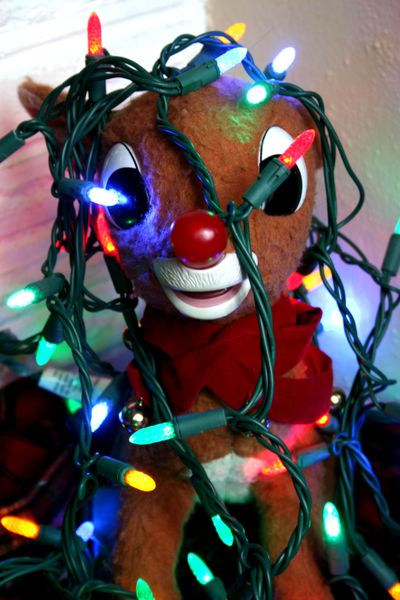Should you make the switch to LED holiday lights?
More retailers offering exchange programs

Have you made the switch to holiday LED lighting yet? Swapping your old incandescents for more efficient LEDs can help save on the initial cost, and ultimately provide you with more benefits.
Local retailers such as Sun People Dry Goods and online sites such as HolidayLEDS.com and AGreenSupply.com offer anywhere from 10 to 15 percent off LED (light-emitting diode) lights, and may even take your old incandescents even if they’re tangled, broken and/or non-working. All seem interested inhelping you make the switch to a greener option to illuminating your holidays.
Though it’s been somewhat slow going for LEDs to catch on, consumers finally seem to be showing interest—as seen in a 40 percent jump in LED holiday light purchases over the past four years.
“Last year, people weren’t very interested, but this year, they’re buying them up and it’s not even December yet,” said Bart Templeman, manager at Sun People Dry Goods.
Until recently, LED Christmas lights lacked a variety of colors, shapes, sizes and brightness. However, current versions offer a wide range of colors, are much brighter, come in many shapes and sizes, have the ability to blink, and use as little as 1/10th the energy as conventional outdoor Christmas lights.
Previously, even though people could save up to 90 percent in holiday lighting costs (according to the U.S. government’s Energy Star program) with LEDs, the lack of colors/brightness wasn’t enough for them to make the switch. EnergyStar says the amount of electricity consumed by one 7-watt incandescent bulb could power 140 LEDs—enough to light two 24-foot strings.
“The LEDS just make sense…they have thicker wiring, last much longer and use less energy,” said Templeman.
For its second year, Sun People Dry Goods is offering a 10 percent discount on LEDs for people who turn their old lights in. Available in 25- and 50-foot strings, the selection includes multi-colored, bright white and warm white and cost $18.99 to $29.99.
The Home Depot in Spokane Valley already hosted its light exchange, but had to limit the length of the program because it is so popular.
“Last year people weren’t really buying the LEDs so much, but this year, with the increased education and awareness, it seems people are starting to see the many benefits,” said a Home Depot garden center sales associate who declined to give her name. “Now this year, they’re selling roughly three times as well as last year—and instead of more incandescents than LEDs, we’re offering twice as many LEDs as incandescents…they’re really flying out the door.”
The sales associate also said that a another perk about LED holiday lighting is that you can plug 45 100-watt bulb strings end-to-end and not blow a circuit; the maximum number of incandescent light strings you can string end-to-end is only five.
What are other advantages to LEDs?
“LEDs are better for the environment; run much cooler, reducing fire risk; should last longer; and could save money eventually,” said a report on ConsumerReports.org.
Although the site also says it may take more than one holiday season for savings to kick in, eventually they could be significant as they use 1 to 3 kilowatt hours of energy, compared with 12 to 105 kWh for the incandescent lights.
Plus, you won’t be buying as many lights down the road: the report found each string of incandescent lights had one or more bulbs burn out before even 2,000 hours, while the LED lights were working even after 4,000-plus hours.
“LED bulbs can keep your season bright for as long as 100,000 hours,” says Cathy Choi, president of Moonachie, N.J.-based Bulbrite, which manufactures LED and regular bulbs.
Introduced in 1962, the first commercial LEDs emitted low-intensity red light and were commonly used as replacements for incandescent and neon indicator lamps, first in expensive equipment such as laboratory and electronics test equipment, then later in such appliances as TVs, radios, telephones, calculators, and even watches.
However modern versions, as evident in holiday lighting, are now available in brighter intensities and operate across various wavelengths, for purposes such as car lights, traffic signals and homes.
In the past, many consumers chose to stick with old lights because they didn’t like the brighter hue of white LED holiday lights. But Choi says manufacturers now offer the “warm white” bulb that more closely mimics the glow of an incandescent light.
If you’re looking for your house to stand out from the rest, colored and color-changing LED holiday lights definitely make your display bolder and brighter with their more vibrant light, says Choi.